© elfruler 2024
This glossary comprises terms that apply specifically to Bald Eagles. It is not intended to be a comprehensive glossary for birds, although many of the terms apply to many birds (e.g. “cere”), most birds (e.g. “crop” ), or all birds (e.g. “hypothalamus”). For some terms I have provided an etymology (linguistic origins), which is one of my favorite things, but it also may shed light on why scientists use that particular term. Many entries include more than a definition, but also more details than would be found in a dictionary.
All of the entries are my work, although naturally I have relied on many sources (most of them found in lists of References throughout this website) to guide my definitions and explanations. As with everything else on this website, I own the copyright to all of the entries, except where specifically noted and credited. If you copy any text to share, please put quotation marks (” “) around the text and give a link to my website (www.elfruler.com).
This is a work in progress — I continue to add new terms. If you do not find a term here that you would like me to add, please contact me.
Click on photos to enlarge.
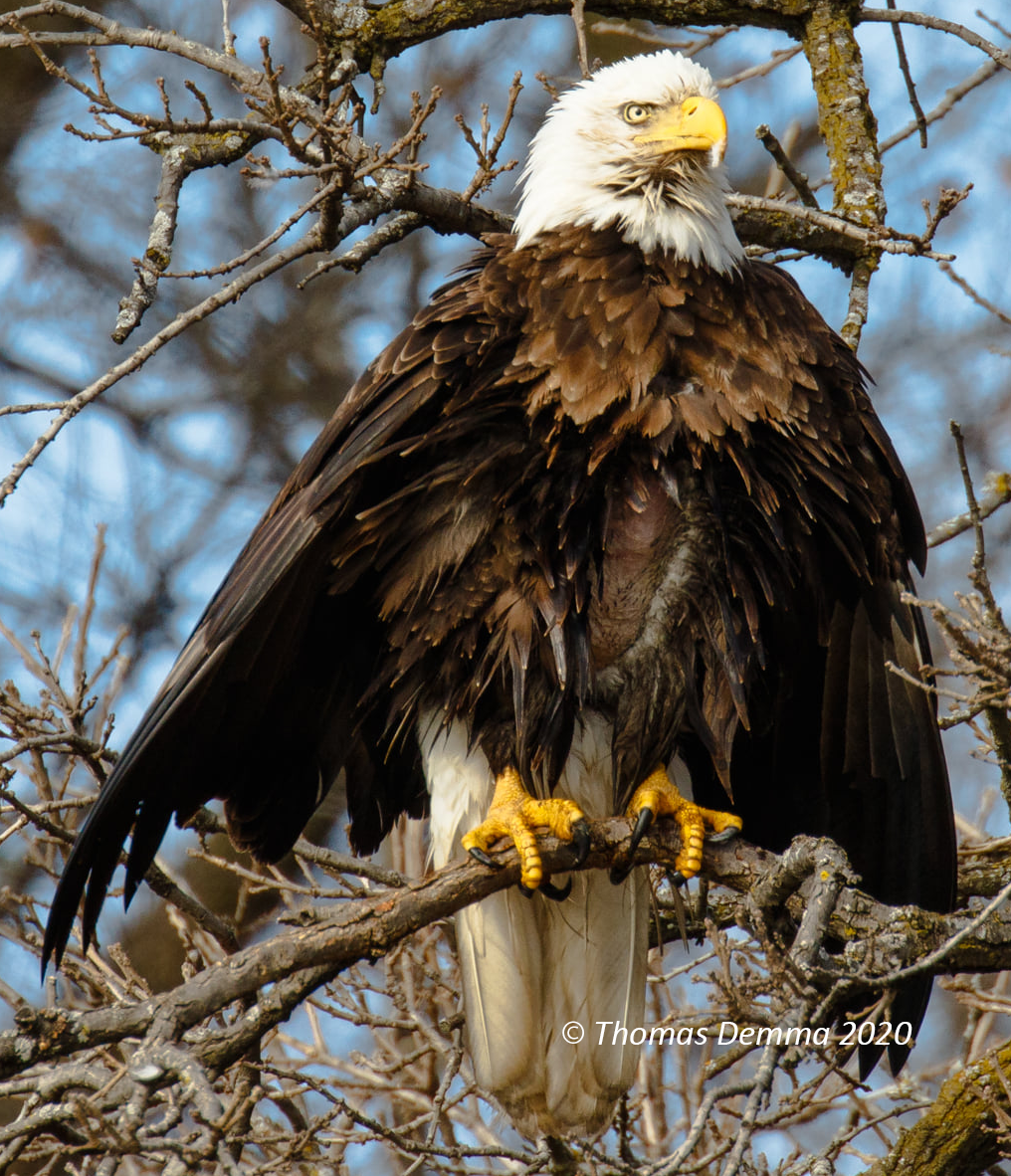
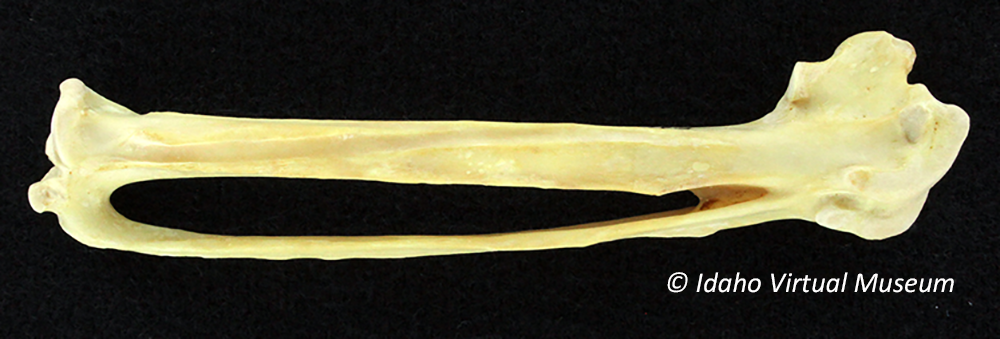 shape that gives the bone strength and stability; the wing digits are connected to the distal end, together forming the manus or hand; primary feathers P1-P6 attach to the carpometacarpus by ligaments and tendons; photo © Idaho Virtual Museum as licensed by Creative Commons
shape that gives the bone strength and stability; the wing digits are connected to the distal end, together forming the manus or hand; primary feathers P1-P6 attach to the carpometacarpus by ligaments and tendons; photo © Idaho Virtual Museum as licensed by Creative Commons long thin leg bone extending down from the knee joint, along the lateral (outer) side of the tibiotarsus, narrowing significantly and fusing to the tibiotarsus just above the intratarsal joint (ankle); photo of fibula on the lateral side of the tibiotarsus, © Idaho Virtual Museum as licensed by Creative Commons
long thin leg bone extending down from the knee joint, along the lateral (outer) side of the tibiotarsus, narrowing significantly and fusing to the tibiotarsus just above the intratarsal joint (ankle); photo of fibula on the lateral side of the tibiotarsus, © Idaho Virtual Museum as licensed by Creative Commons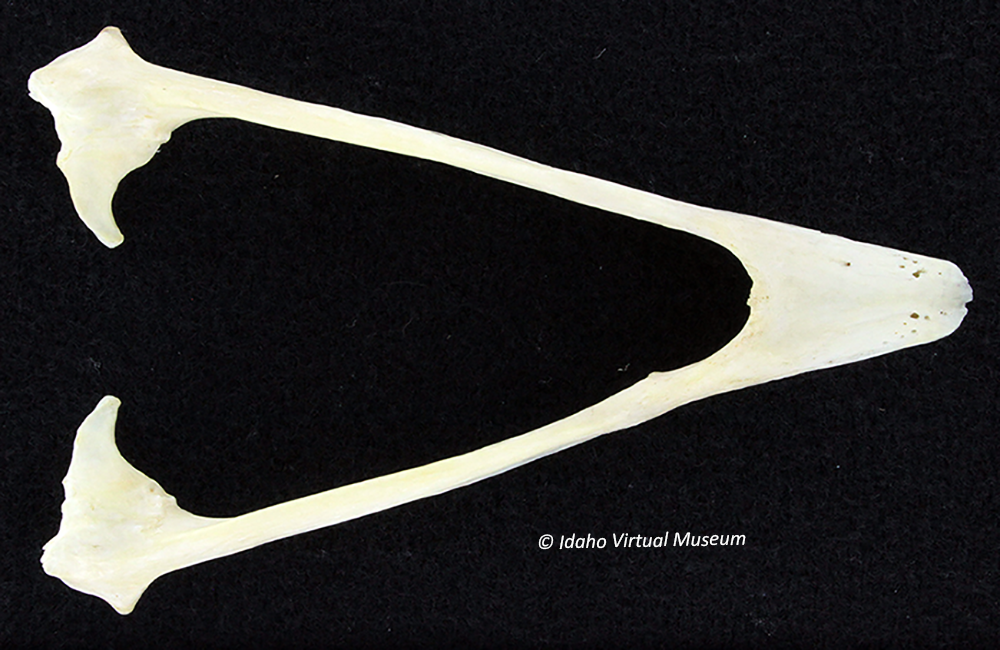 lower jawbone of the beak; long open triangular shape with a short fused section at the tip; in Bald Eagles narrower than the maxilla which surrounds its sides when the beak is closed; articulates dorsally with the same bone (the quadrate) that moves both the mandible and the maxilla to open and close the beak; bone is covered by a layer of tissue with blood vessels and nerves, and sheathed on the lower side by a thick hard covering of beta-keratin, which is harder than the alpha-keratin found in mammals; photo from ventral (underneath) side © Idaho Virtual Museum as licensed by Creative Commons
lower jawbone of the beak; long open triangular shape with a short fused section at the tip; in Bald Eagles narrower than the maxilla which surrounds its sides when the beak is closed; articulates dorsally with the same bone (the quadrate) that moves both the mandible and the maxilla to open and close the beak; bone is covered by a layer of tissue with blood vessels and nerves, and sheathed on the lower side by a thick hard covering of beta-keratin, which is harder than the alpha-keratin found in mammals; photo from ventral (underneath) side © Idaho Virtual Museum as licensed by Creative Commons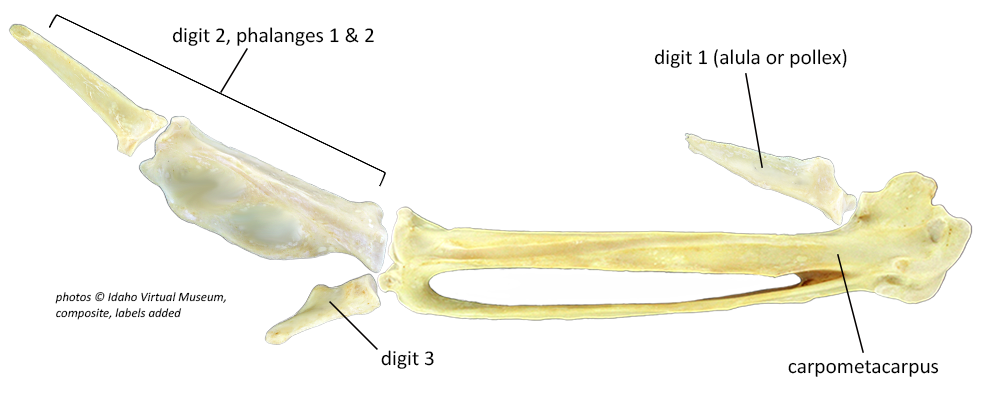 carpometacarpus (fused carpal and metacarpal bones) and 3 digits with several fused phalanges; the 10 primary feathers attach to the manus by ligaments and tendons; composite of images © Idaho Virtual Museum, my labels added, as licensed by Creative Commons; 3-D image of the wing bones including the manus
carpometacarpus (fused carpal and metacarpal bones) and 3 digits with several fused phalanges; the 10 primary feathers attach to the manus by ligaments and tendons; composite of images © Idaho Virtual Museum, my labels added, as licensed by Creative Commons; 3-D image of the wing bones including the manus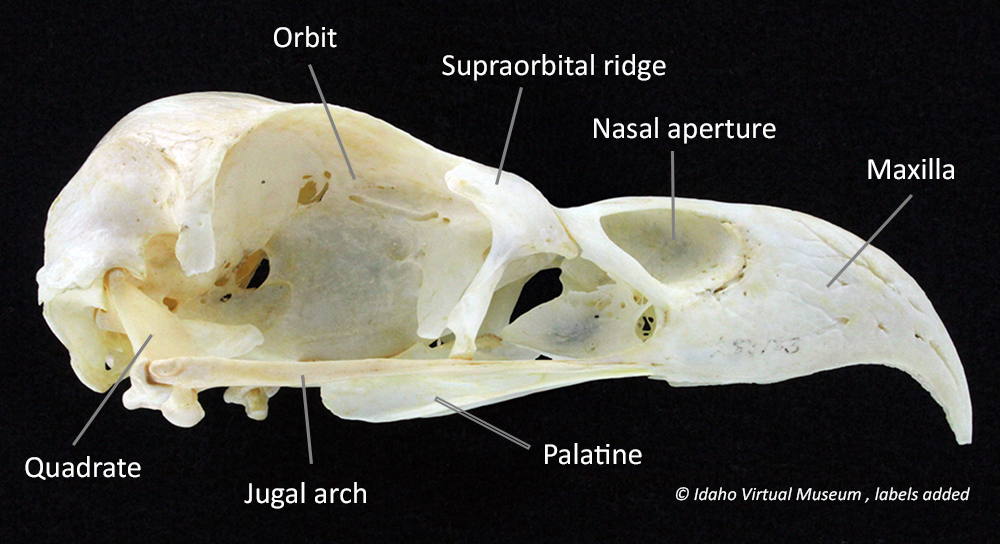 see also a 3D VISUALIZATION OF A BALD EAGLE SKULL
see also a 3D VISUALIZATION OF A BALD EAGLE SKULL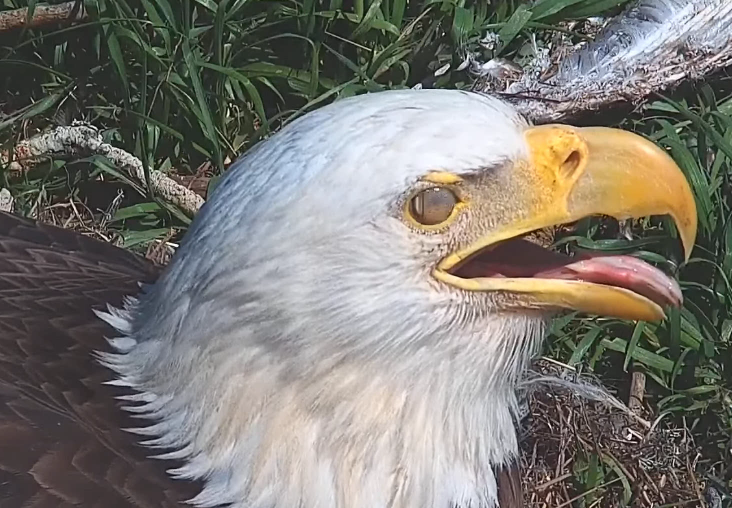 from front to back; cleans, lubricates, and protects the eye from debris; sometimes called the third or inner eyelid (screen capture, CA Sauces Canyon, 3/11/24, © Institute for Wildlife Studies; see video)
from front to back; cleans, lubricates, and protects the eye from debris; sometimes called the third or inner eyelid (screen capture, CA Sauces Canyon, 3/11/24, © Institute for Wildlife Studies; see video)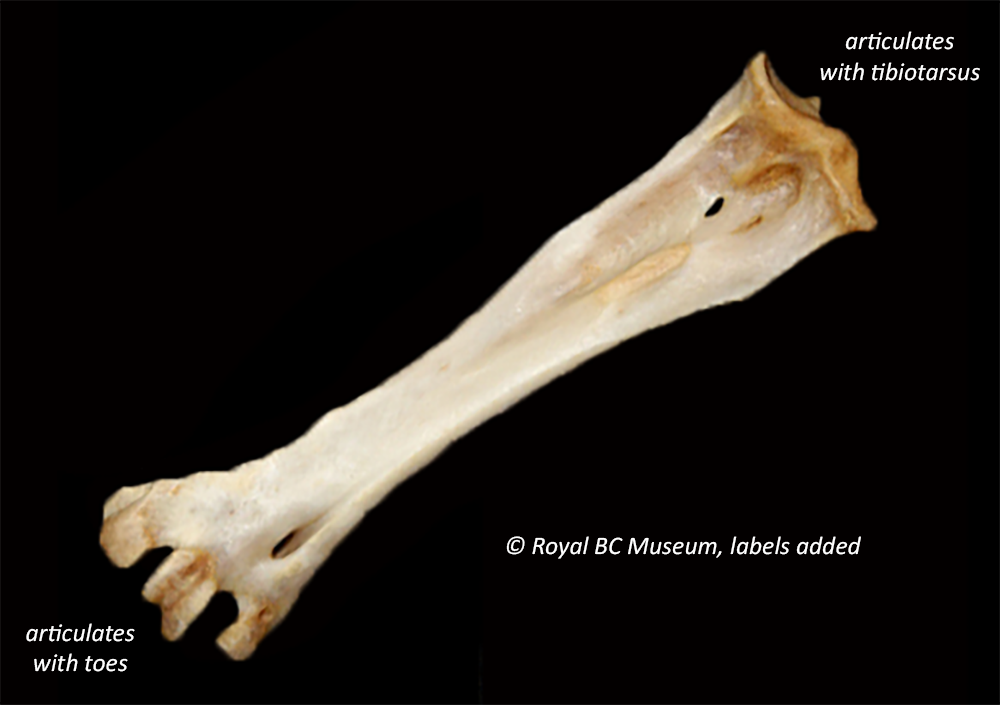 the toes; in birds consisting of the distal tarsal bones (the heel in humans) fused together with the metatarsal bones (the foot bones down to the toes); can be mistaken for a leg bone because it is longer than a human foot (see tibiotarsus); in Bald Eagles the lower portion of the tarsometatarsus is unfeathered; sometimes called simply the tarsus or the metatarsus; photo © Royal BC Museum with labels added
the toes; in birds consisting of the distal tarsal bones (the heel in humans) fused together with the metatarsal bones (the foot bones down to the toes); can be mistaken for a leg bone because it is longer than a human foot (see tibiotarsus); in Bald Eagles the lower portion of the tarsometatarsus is unfeathered; sometimes called simply the tarsus or the metatarsus; photo © Royal BC Museum with labels added lower leg bone, in birds consisting of the tibia fused at the distal end together with the proximal (upper) tarsal bones (ankle bones in humans), between the knee joint and the intratarsal (ankle) bone; the longest leg bone in most birds, including eagles; parallel with the much narrower fibula, which fuses to it about two-thirds of the way down toward the intratarsal joint (ankle); photo of tibiotarsus with fibula on lateral side © Idaho Virtual Museum as licensed by Creative Commons
lower leg bone, in birds consisting of the tibia fused at the distal end together with the proximal (upper) tarsal bones (ankle bones in humans), between the knee joint and the intratarsal (ankle) bone; the longest leg bone in most birds, including eagles; parallel with the much narrower fibula, which fuses to it about two-thirds of the way down toward the intratarsal joint (ankle); photo of tibiotarsus with fibula on lateral side © Idaho Virtual Museum as licensed by Creative Commons